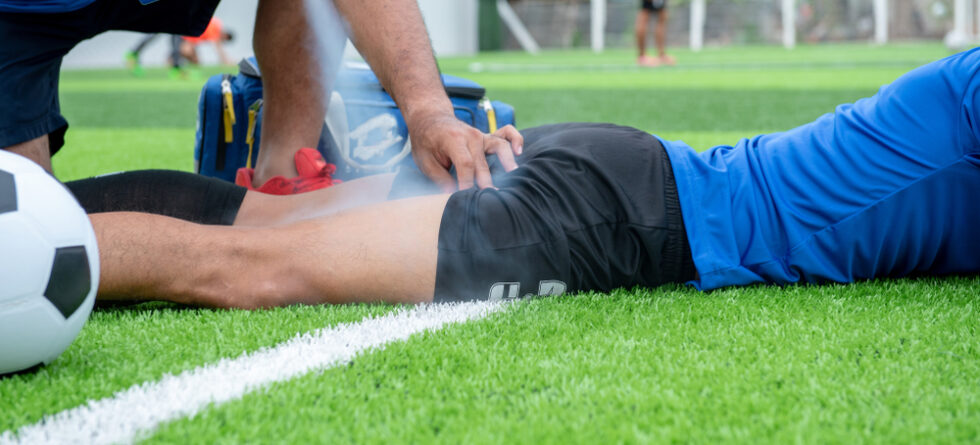Soccer is a globally beloved sport that combines speed, agility, and skill. Like all physical activities, it comes with a risk of injuries. Among the various injuries that soccer players face, lower extremity injuries are the most common, with a particular emphasis on injuries to the ankles and knees. Let’s delve into why these injuries occur, their implications, and how they can be prevented.
Ankle Sprains
Ankle sprains are prevalent in soccer due to the sport’s dynamic movements, including rapid changes in direction, jumping, and tackling. This injury occurs when the ligaments that support the ankle stretch beyond their limits and tear.
Prevention
- Proper Footwear – Wear soccer cleats that offer good ankle support and fit well.
- Strength Training – Strengthening exercises for the muscles around the ankle can improve stability.
- Proprioceptive Training – Balance exercises enhance proprioception, helping the ankle respond better to uneven surfaces and unexpected movements.
Knee Injuries
Anterior Cruciate Ligament (ACL) Injuries – ACL injuries are a significant concern in soccer, especially among female athletes. They can occur during activities that involve sudden stops, changes in direction, or direct contact.
Meniscus Tears – The meniscus can be torn when twisting the knee, making a sharp turn, or during a tackle. This injury is common in soccer due to the sport’s nature.
Prevention
- Warm-up Properly – A comprehensive warm-up increases blood flow to the muscles and prepares the joints for activity.
- Neuromuscular Training – Exercises that improve the coordination of muscles around the knee can reduce the risk of ACL injuries.
- Technique Training – Learning and practicing proper techniques for jumping, landing, and changing direction can help avoid undue stress on the knees.
Overuse Injuries
Stress Fractures and Tendinopathies – Frequent training and repetitive stress can lead to overuse injuries like stress fractures in the feet or lower legs and tendinopathies in the Achilles tendon or patellar tendon.
Prevention
- Adequate Rest – Incorporate rest days into your training regimen to allow your body to recover.
- Cross-Training – Engaging in different types of exercises can reduce the risk of overuse injuries by distributing stress across various body parts.
- Gradual Increase in Activity – Avoid sudden increases in training intensity or duration, which can lead to overuse injuries.
While soccer offers numerous physical and mental health benefits, players need to be aware of the risk of injuries, particularly to the ankles and knees. By implementing preventive strategies such as proper warm-up routines, strength, and proprioceptive training, and wearing appropriate equipment, players can significantly reduce their risk of injury. The key to a long and healthy soccer career is not just the skills you develop on the field but also how well you take care of your body off it.




